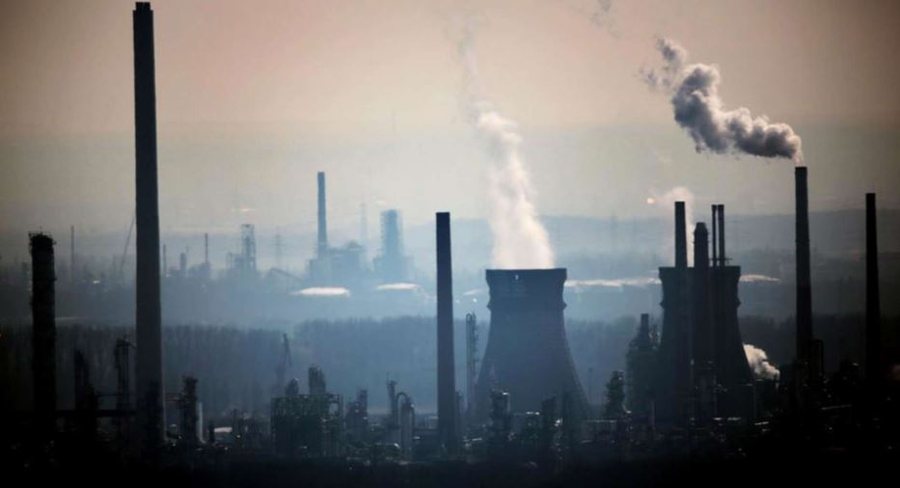Natural disasters "flood" the economy - Damages could reach $145 billion in 2025

According to a new analysis from the Swiss Re Institute, global natural catastrophe insurance losses could reach $145 billion this year, largely driven by "secondary perils" such as floods, fires and severe storms.
This follows a long-term annual growth trend of five to seven percent, the institute said. The report said "primary hazards" such as earthquakes and hurricanes pose the greatest risks, potentially pushing insurance claims to more than $300 billion in a year when the events peak.
"The year 2025 began with wildfires in Los Angeles, causing an estimated $40 billion in insurance losses. While these secondary peril losses are significant, primary perils remain the biggest threat: when a major hurricane or strong earthquake hits a densely populated urban area, insurance losses that year can be more than double the long-term loss trend," the Swiss Re Institute said in a press release.
The last peak year was 2017, driven by hurricanes Irma, Harvey and Maria. The institute said peak years, caused by a few "primary hazard events" or an accumulation of them and "secondary hazard events," should not be viewed as an anomaly.
Since 2017, fundamental risks have steadily increased, along with population growth, economic expansion, and urban sprawl, including in places vulnerable to natural disasters.
"Our latest analysis of over 200 internal models and the trend of losses over the past 30 years show what is at stake. When a severe hurricane or a major earthquake hits an urban area in a country with many insured buildings, insurance losses can easily reach $300 billion in that year," said Swiss Re official sources.
The institute's estimates have found that some hurricanes from the early 20th century would result in losses of more than $100 billion if they struck today. Hurricane Andrew, for example, caused $35 billion in damages to insureds in 1992. Today, a hurricane on the same path would result in almost three times the losses due to economic and population growth, as well as urban sprawl.
Although the severity of claims has increased globally, the United States accounted for almost 80 percent of the world's insurance losses last year due to its vulnerability to severe hurricanes, earthquakes, fires, storms and floods.
There are many factors that affect insurance rates, including inflation and local regulations. But in the long run, the main factor in determining the cost of rates and claims is exposure to natural hazards.
Poll

New criteria for free oil in agriculture - What documents must be submitted to avoid being disqualified?
Farmers applying to receive cash payments for agricultural oil used for mechanized work must meet several new criteria. The joint instruction of the......

How did this month end for the major currencies?
The US dollar closed this month negatively after continuously experiencing a decline in its value, as it was bought this morning at 86.1 lek and sold at 87.1......

CEC starts testing electronic voting and counting - Celibashi: Over 70 thousand emigrant votes arrive
"In the municipality of Vora and Unit 10 in Tirana, in the parliamentary elections of May 11, citizens will have the opportunity to vote through the......

Trump gives a "hand" to car manufacturers - Plans to ease the impact of tariffs on domestic industry
US President Donald Trump has decided to take action to ease the impact of his tariffs on American car manufacturers, a senior White House official......

Development of the energy sector - Rama: Investments in power plants and the electricity network guarantee energy independence
Achievements and plans for the development of the energy sector were the focus of a meeting held with investors in renewable energy sources, mining, and the......

High school graduates in the process of simulation for the elections - "Qemal Stafa" students practice in the presence of internationals
Students of the "Qemal Stafa" high school in Tirana, who are first-time voters, organized a simulated voting process. Through this process, the students were......

Chinese cars "step on the gas" - New models dominate the domestic market, Europe suffers a sales decline
It all came about because of the pandemic. If before Covid only 36% of Chinese people chose cars from national brands, in less than three years a revolution......

Credit to the economy reaches 864 billion lek - BoA: Businesses contributed more to the growth of the stock
Credit to the economy continued to grow at a rapid pace in the first 3 months of 2025. According to figures just published by the Bank of Albania, credit to......




















